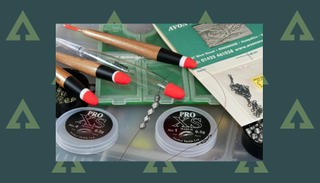How to get the best out of split shot and weights on your line
Coarse angler Colin Mitchell is your guide to those little weights that make a big difference!

Welcome to Advnture, the new home of AnglersMail.co.uk
Split shot – or more specifically the patterns in which they should be used – is something that many inexperienced anglers get confused about.
Other anglers with more experience even believe that there is a holy grail of shotting patterns – one that catches more than any other.
But let’s get this straight…there are just two basic patterns for split shot. They are strung out or bulk down with a dropper.
Start with those two and adapt them to suit the conditions and species and you won’t go far wrong.
Strung out shot is good when the fish are willing to take bait on the drop. It is probably linked to warmer water fishing more than anything else.
Bulk shotting is to get the bait down fast to the deck where the fish are feeding. It’s also handy to get through smaller fish that might be higher up in the water.
Advnture Newsletter
All the latest inspiration, tips and guides to help you plan your next Advnture!

But please beware… in both cases you should never wear blinkers.
The size of the shot on the line can be varied. Where you place them on the line should be changed, too – even during a session if you are not getting bites or the fish appear to have gone off the feed.
Good anglers learn to experiment and not stick to one pattern or even one depth of water.
Also remember that the shot are not there just to cock your float. They are there to help register bites and aid bait presentation.
The flow of the water – even in lakes – the depth, wind and where the fish are feeding must all be taken into account when you shot up.

Useful split shot tips
Here are a few other good tips to follow. They can be especially useful when fish are a bit more finicky and when bait presentation and bite registration become even more important:
- Always get a shot as close to the hook as possible – even within an inch or two. This is the tell-tale that registers the bites.
- If your float is shotted right but then doesn’t cock properly, strike. A fish has probably intercepted the bait on the way down and held up the shot.
- Count how long it takes each shot to take the float down to the level you set for cocking. Any variation in the time means a fish has the bait.
- Use small shot in groups when possible, rather than big shot. These smaller shot – say No.8s – will give you a much better presentation and will cast better.
- Sometimes a bunch of big shot is useful for pulling a float through with the current, especially if there is a strong upstream wind.
- In rough conditions get as much weight on your line as possible to improve presentation.
- Play around with small shot to dot your float down so the smallest possible bit of it shows. You will be amazed at how many bites you never normally see… a pin head of float showing can register a bite you never knew you had when the float was even just a quarter of an inch out of the water.
- Stotz – very similar to Styl weights – are great for use on bigger diameter lines as they don’t ping off so easily. They are also good for stringing out as they fall slower through the water, giving bait a much more natural drop.
- Dot your float down level with the water and then smear if with a bit of Vaseline just to lift it out of the surface film. You keep sensitivity but have more float on which to spot bites.
Running from 1964 until 2020, Angler's Mail was the UK's leading weekly magazine devoted to coarse fishing, telling readers everything they needed to know about which fish to catch, where to catch them, and what kit they needed to do it. Now, loads of the magazine's expert advice can be found on Advnture.com, as a helpful resource for angling newcomers and experts alike.
Most Popular

